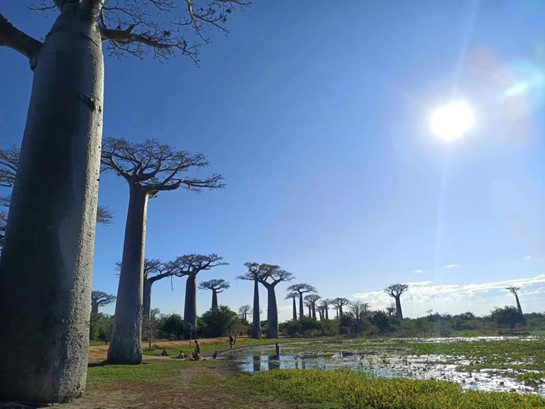Media release
From:
Tracing the family tree of the baobab
Madagascar is the most plausible centre of origin for the baobab tree, according to genomic analyses of all known species published in Nature. The findings provide insights into the evolutionary history of the baobab and how to develop conservation strategies in a changing world.
The iconic African baobabs, from the genus Adansonia, are also known as “mother of the forest” in Malagasy language, the “upside down tree” and the “tree of life”. There are eight morphologically distinct species of baobab trees, with one widespread across Africa, one located in Northwestern Australia, and the other six endemic to Madagascar. However, owing to the lack of fossil evidence, there has been a long-running debate about where the baobabs originated.
Qing-Feng Wang, Tao Wan and colleagues conducted genomic analyses of all eight baobab tree species and combined these datasets with ecological analyses. The analyses indicate that the stem lineage of Adansonia originated around 41 million years ago and diversified around 20 million years ago. The authors found that the historical population dynamics of baobabs are closely related to both interspecific competition and geological changes in Madagascar, especially the change in sea level. Based on data including phylogenetic relationship, gene flow and genetic diversity of different baobab species, the authors suggest that the hypothesis of Madagascar as the centre of origin for baobabs offers the most reasonable explanation of the current data, as opposed to the hypotheses for mainland Africa and Australia.
The findings also enabled the researchers to re-evaluate the conservation strategies and status of baobabs. For example, they propose that a higher conservation status should be assigned to the two endangered Malagasy baobab species, A. suarezensis and A. grandidieri. High levels of inbreeding, low genetic diversity and declining population size all suggest that these endangered species are lacking in resilience to ecological perturbations and will potentially be under severe threat from climate change.
Multimedia





 Australia; International; WA; NT
Australia; International; WA; NT



